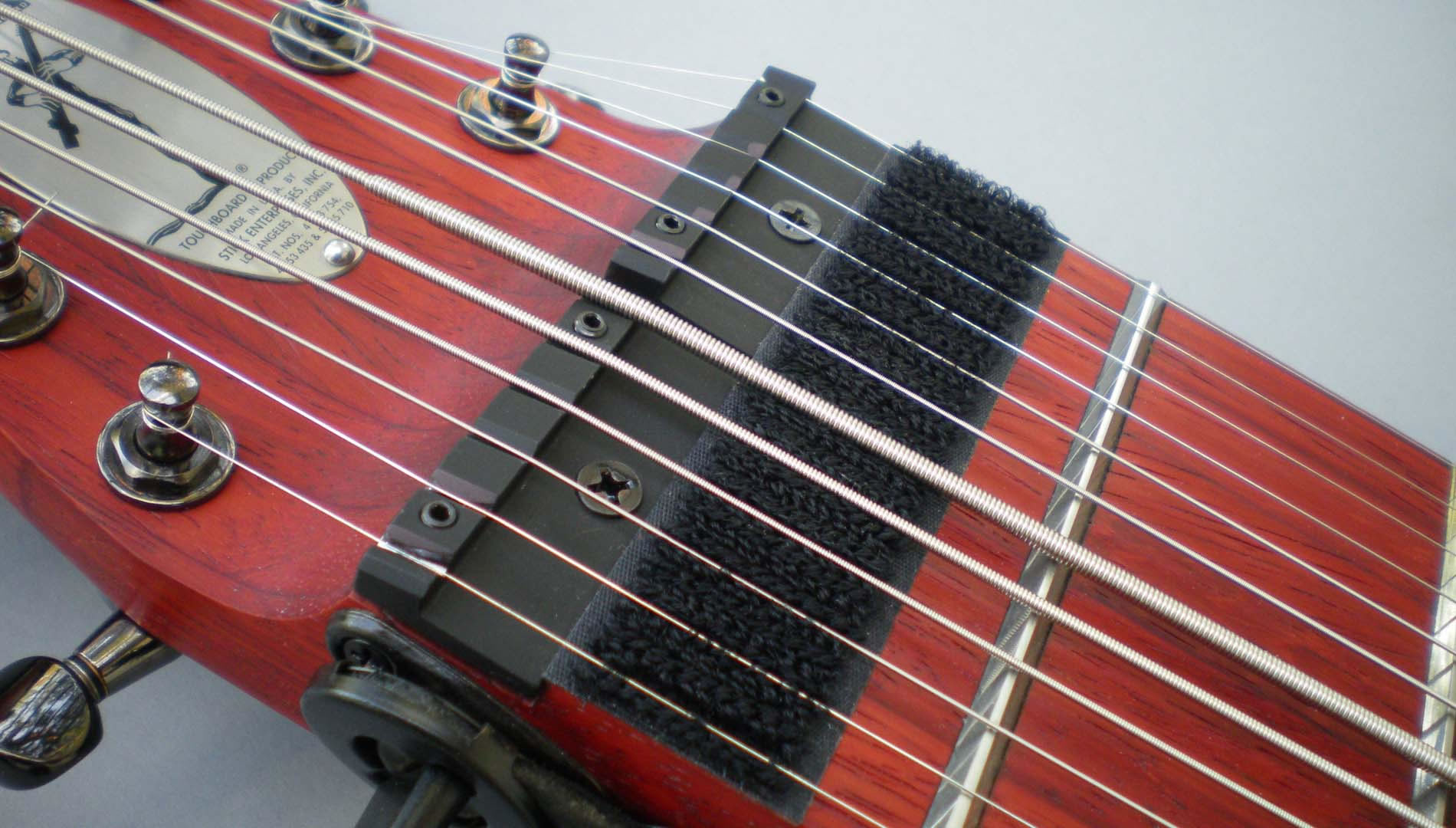About Stick Enterprises Innovation
Flaps™ Dual Nut Unit™

In 1982 we introduced the first adjustible nut on our Stick fretboard tapping instruments — individual nut screws. This feature made it easy to maintain a good setup at the first playable fret, during initial setup, and to make changes when altering the tuning or string gauges, but the adjustment wasn't as subtle as it could be, and the string had to be removed from the nut to make changes.
In 2000, Emmett introduced Flaps, a patented adjustable nut that allowed the strings to remain in place for fine-tuning, and could easily be configured for standard Stick tunings or custom tunings. (View the patent).
The upward sloping, V-shaped saddle grooves precisely and uniformly separate the strings, allowing all tunings to be set up as before. A shallow rocking tripod mechanism under each plate allows nut height adjustment for each string group, melody and bass sides separately.
String clearance over the first fret should in Stick fashion be set very low, but some might like the lower pitched melody or bass strings to have a bit more clearance. Such adjustments are now less complicated. A 1/16th inch hex wrench will smoothly raise or lower the inner or outer ends of either nut.Emmet invented and designed Flaps to make Stick setups easier, both for him at his setup station and for players whenever have have the urge to reset up or "fine tune" or totally reconfigure their instrument.
Two set screws in line with the saddle grooves act as adjustable legs to raise or lower each end of each nut. A single, centrally located fastener screw presses each plate down onto a thick rubber washer and is also height adjustable.
The result is a pair of plates that can be individually raised and lowered in all directions.